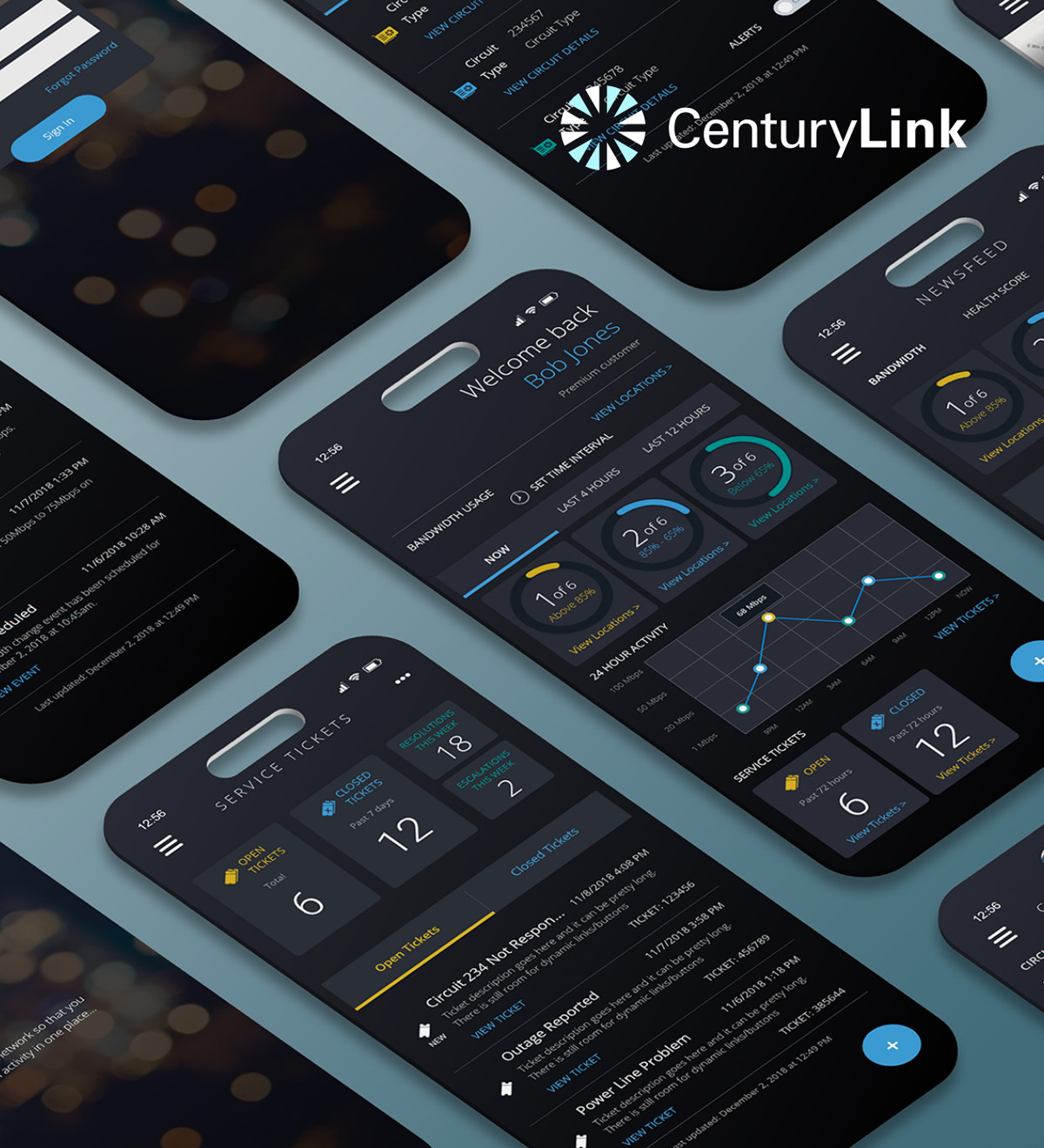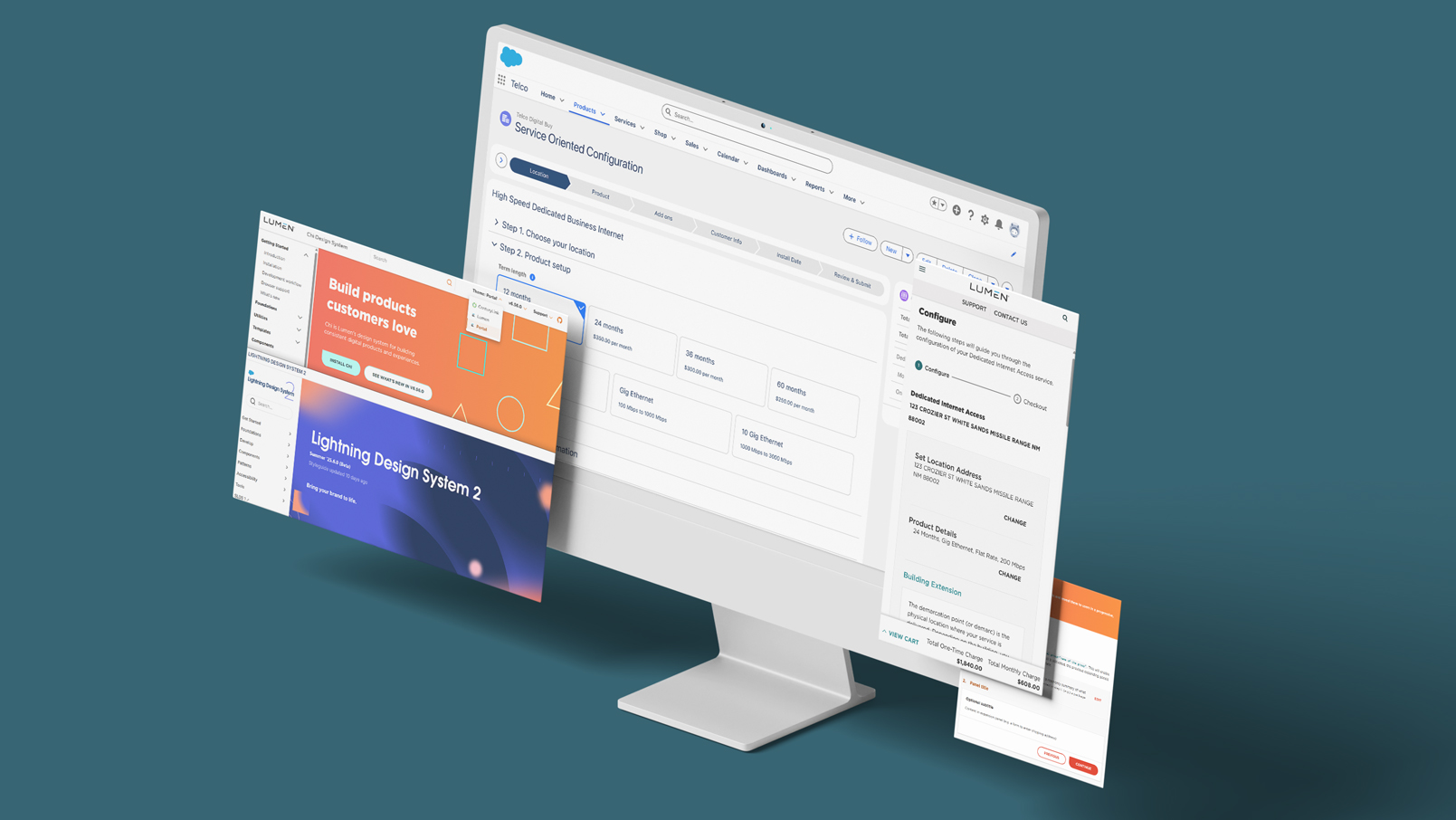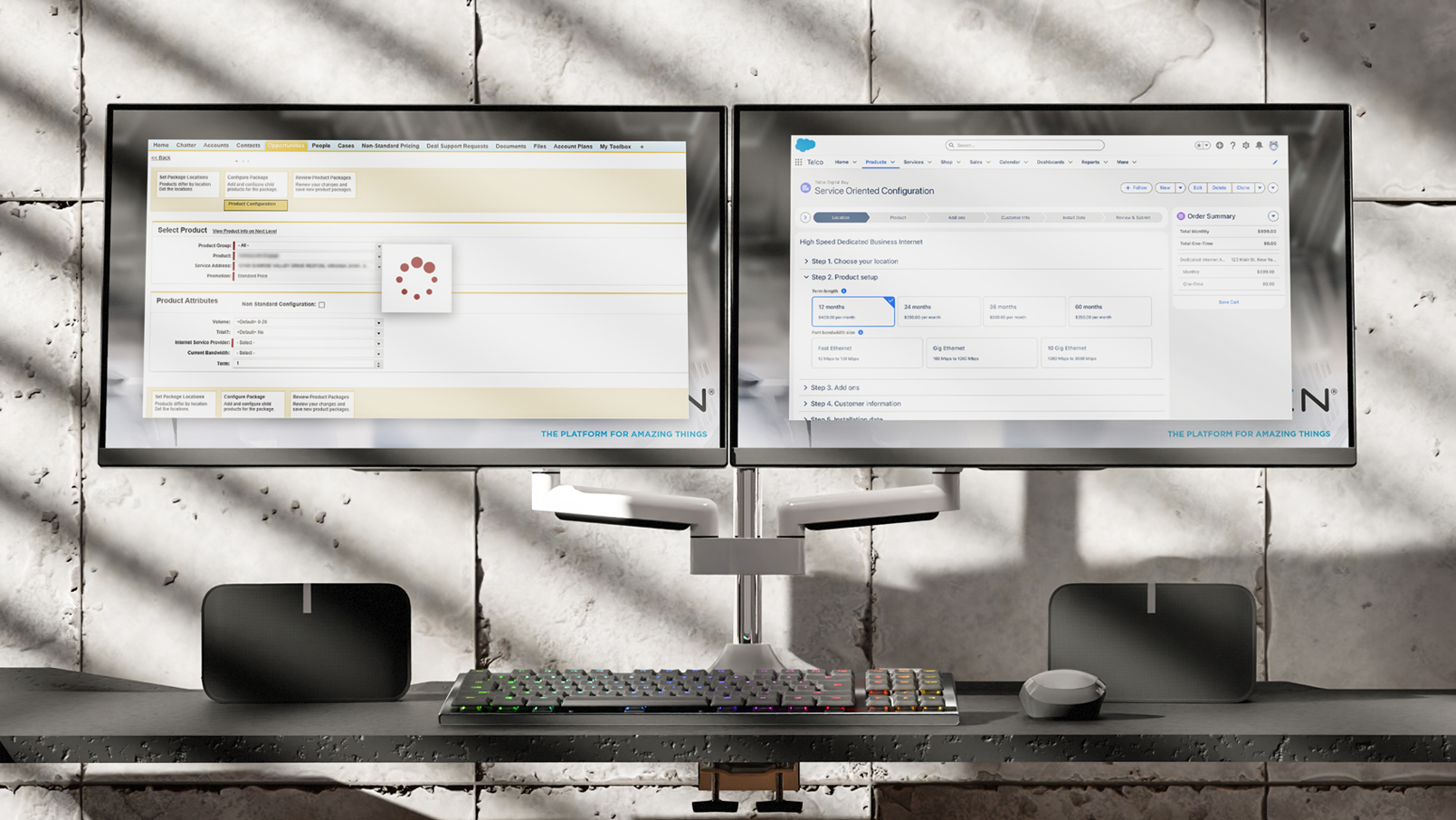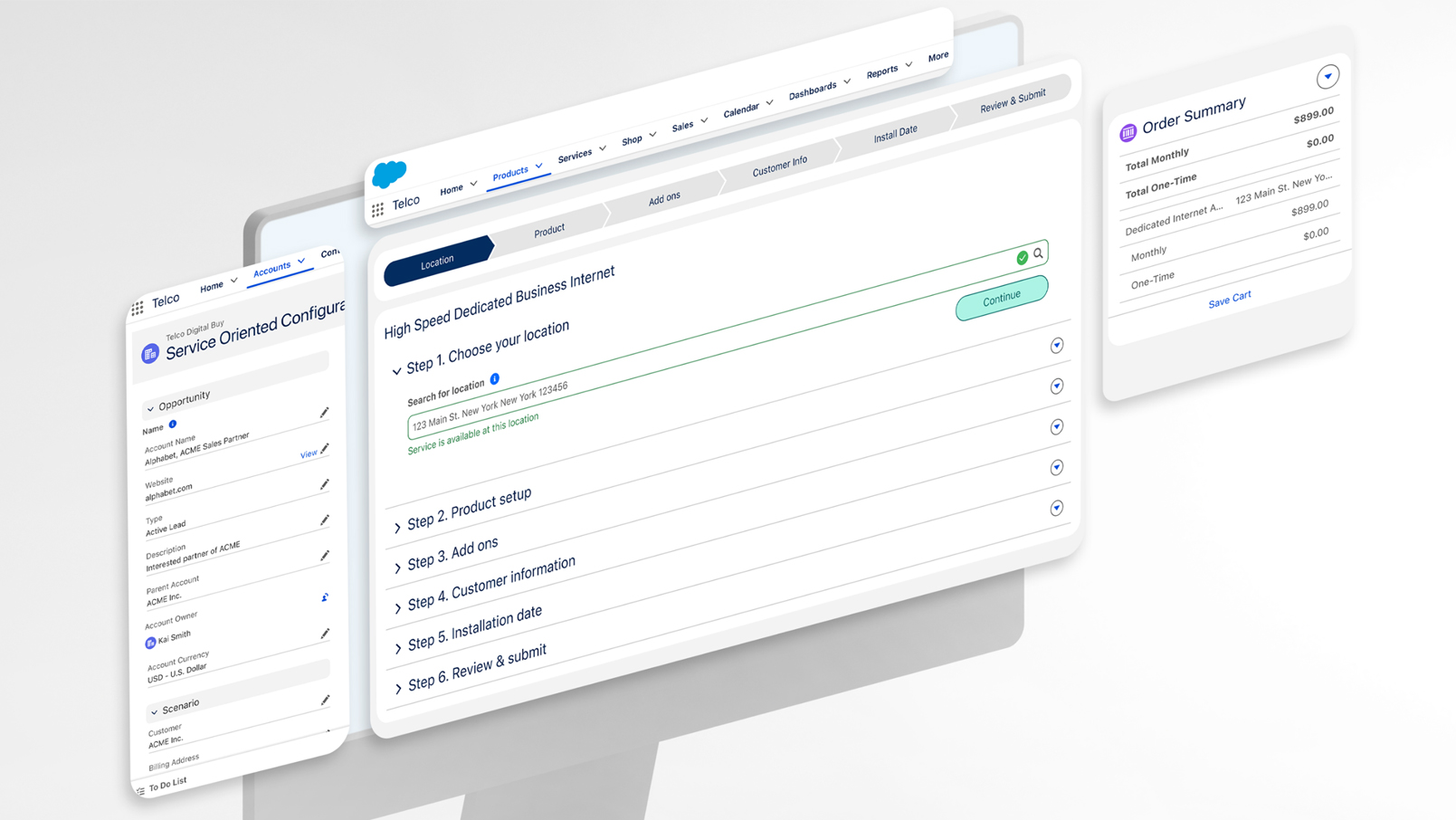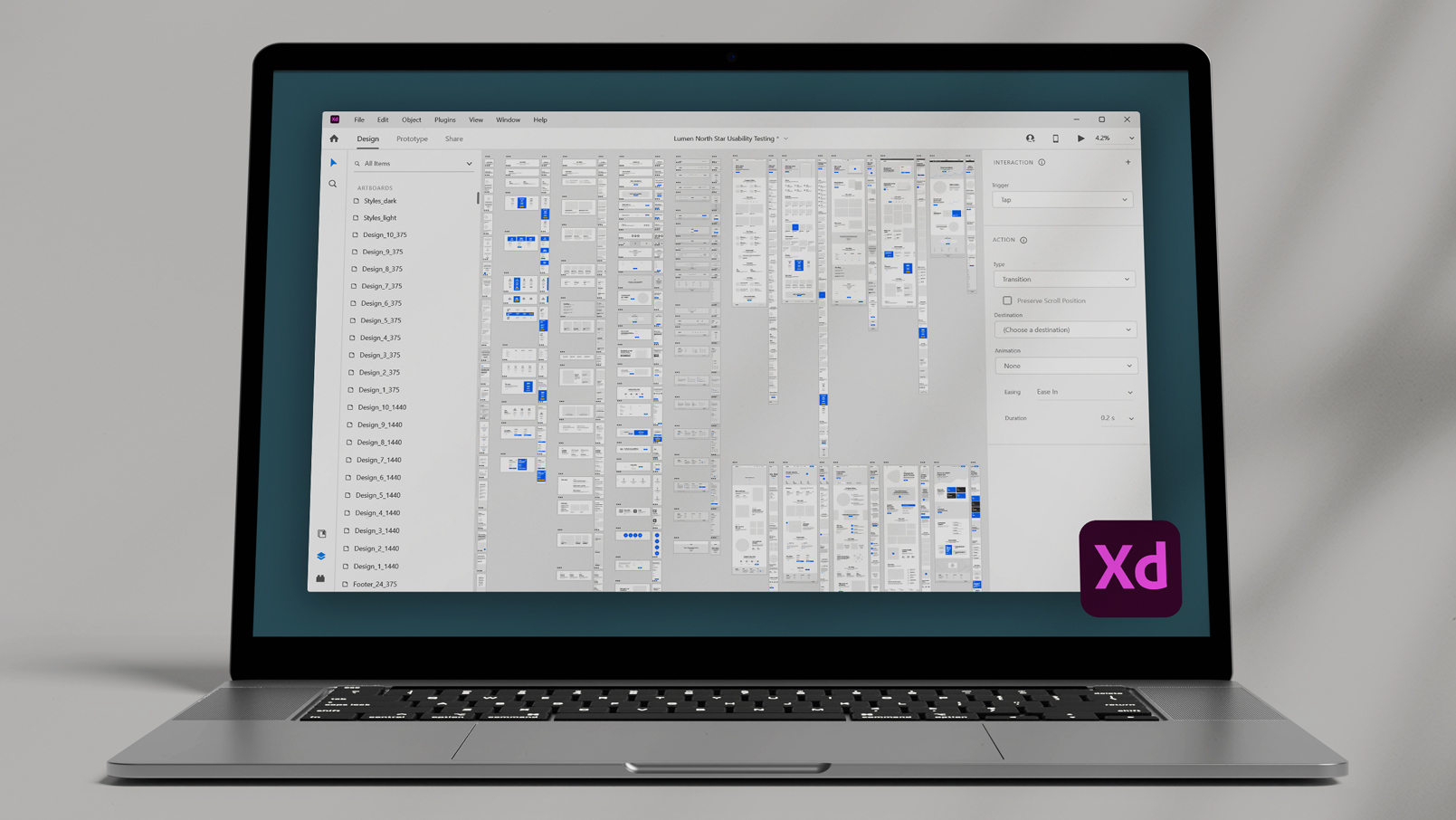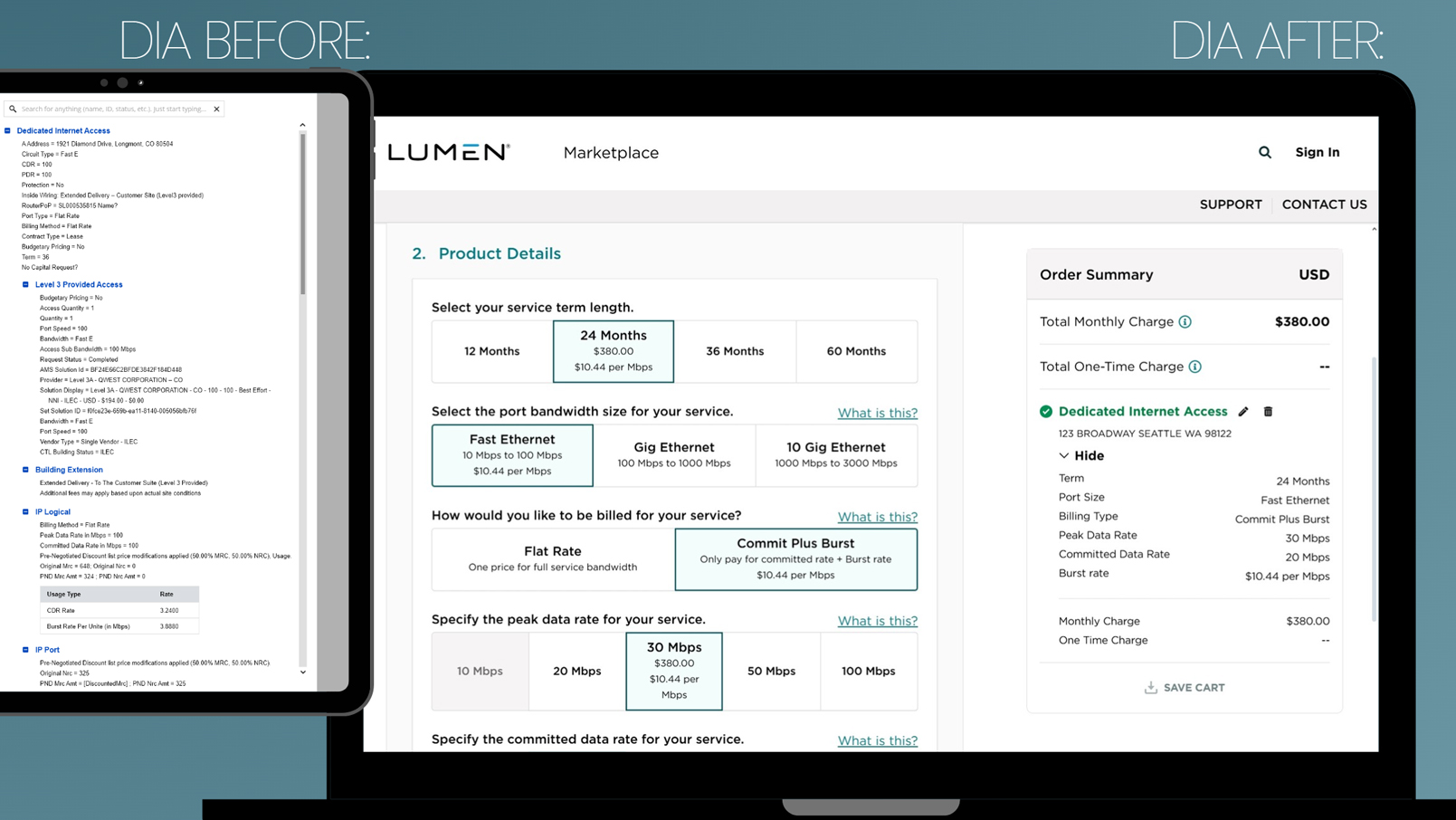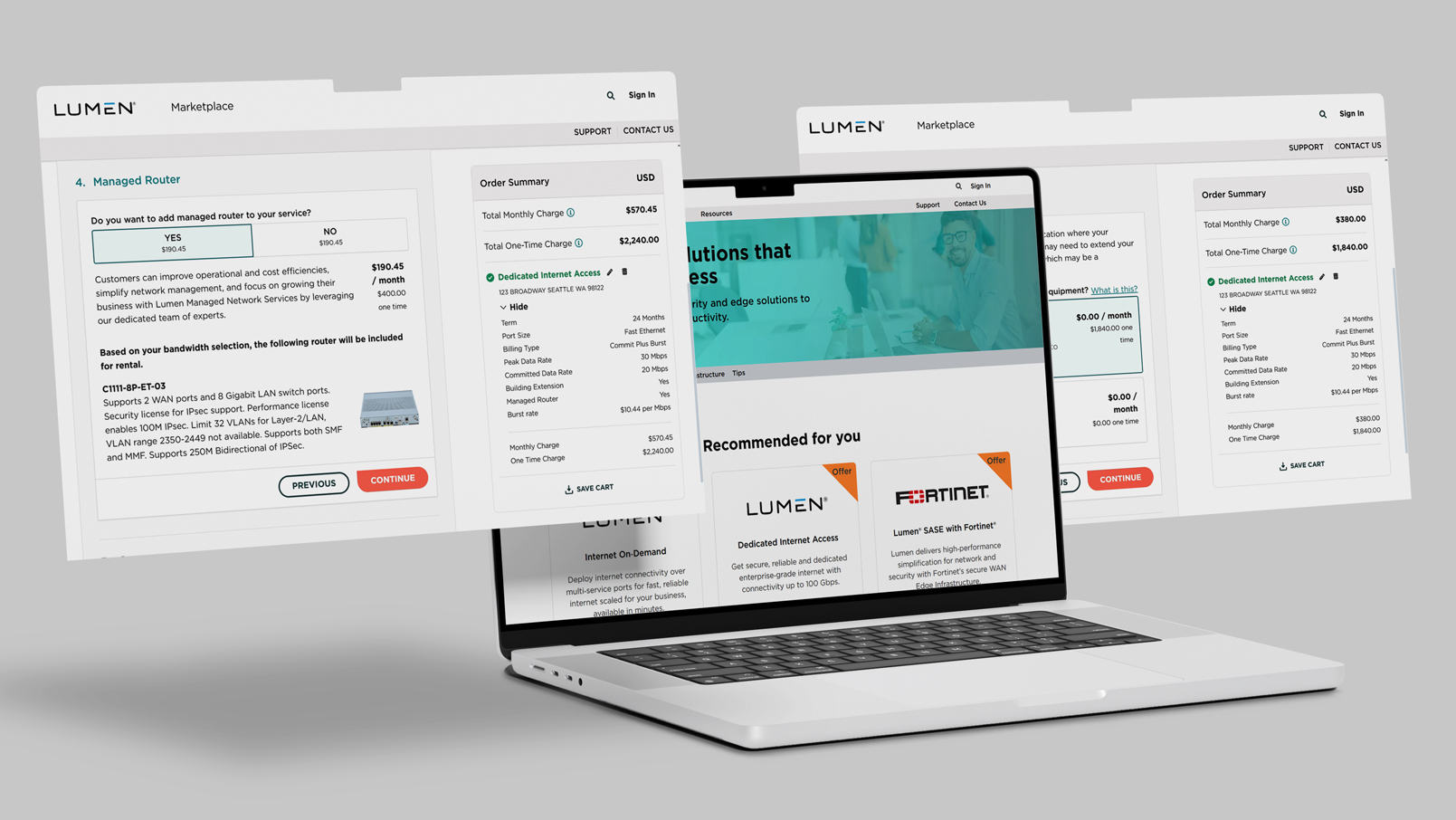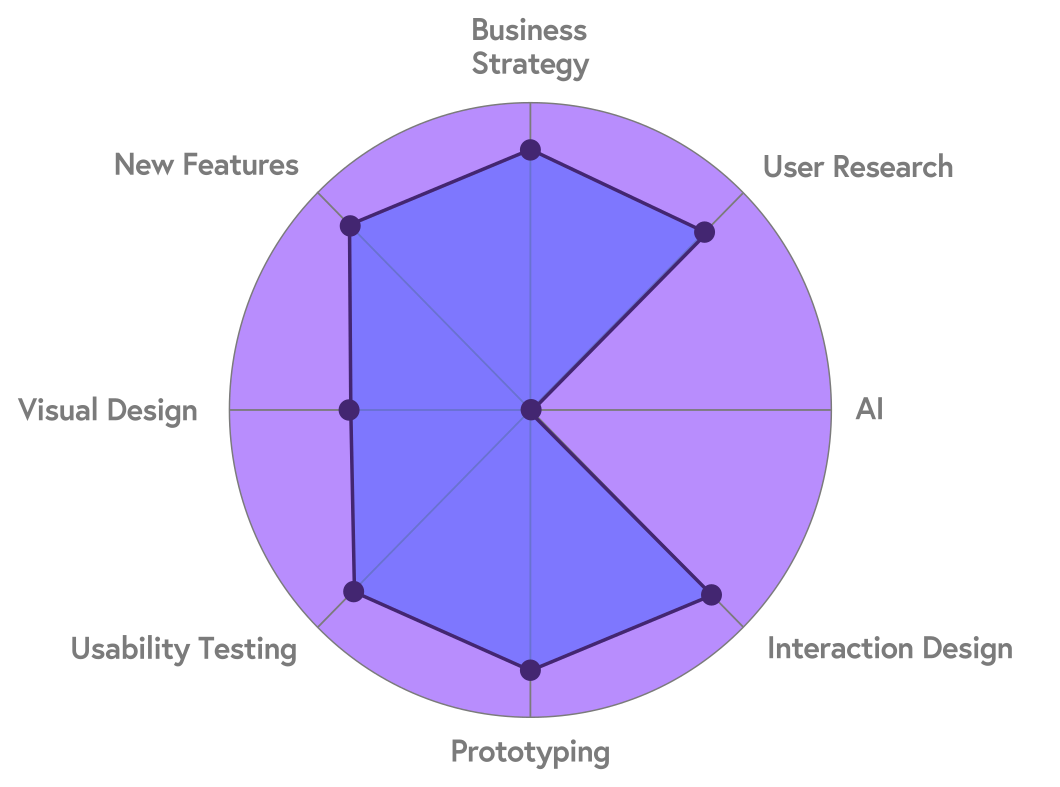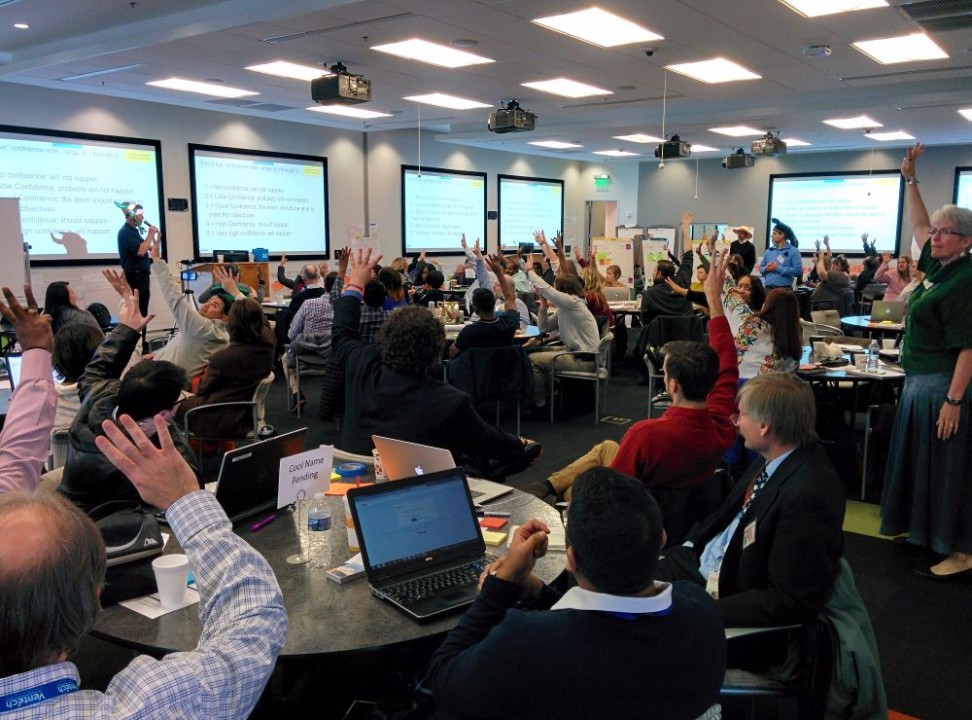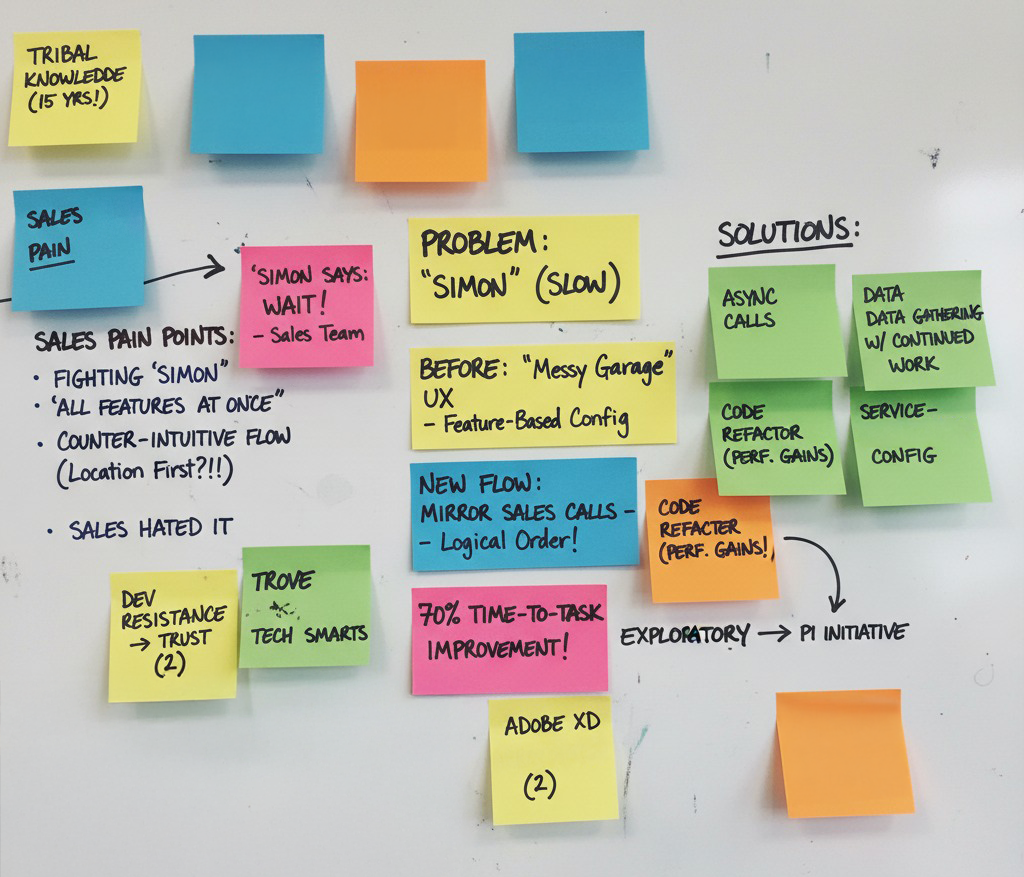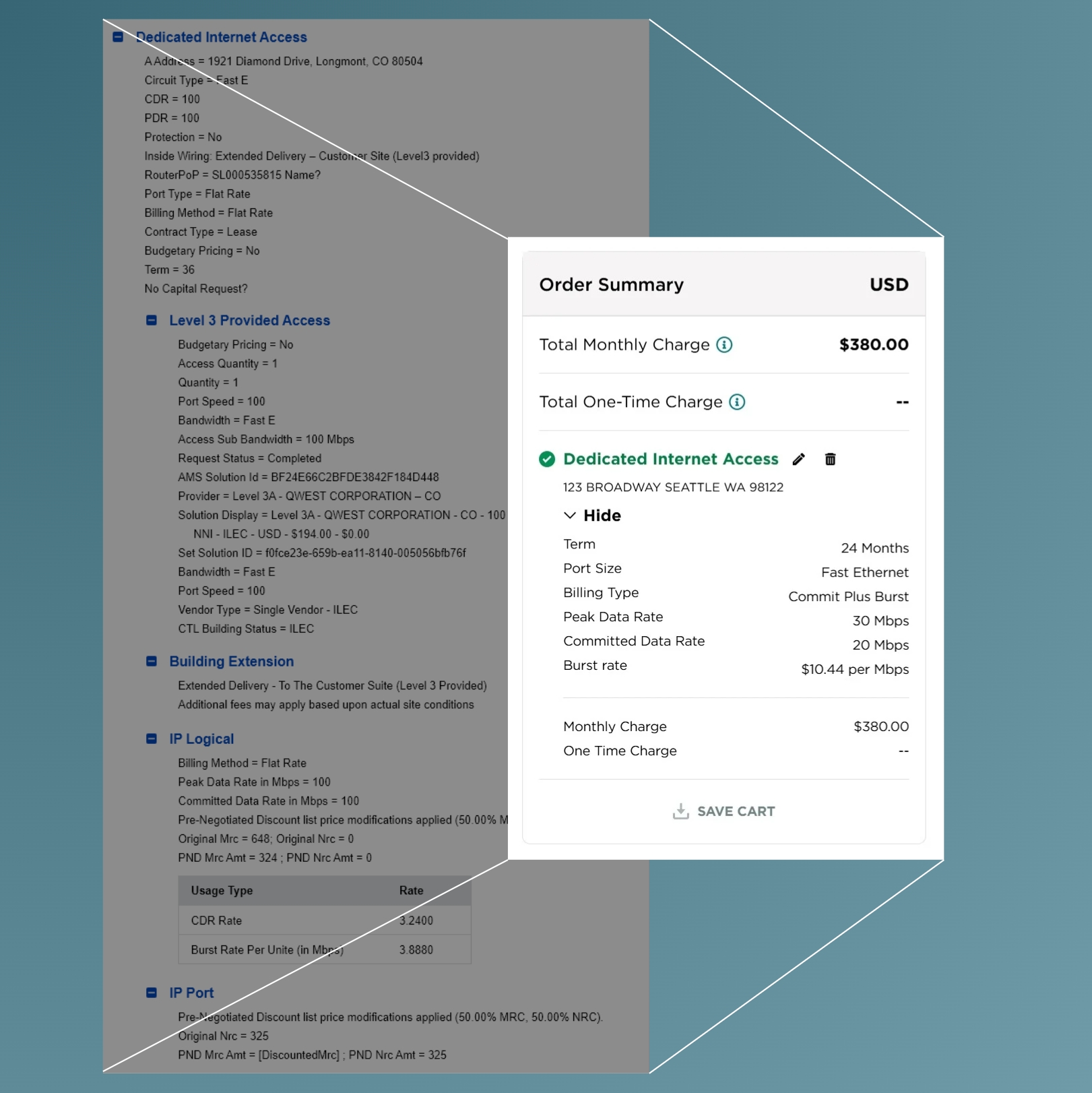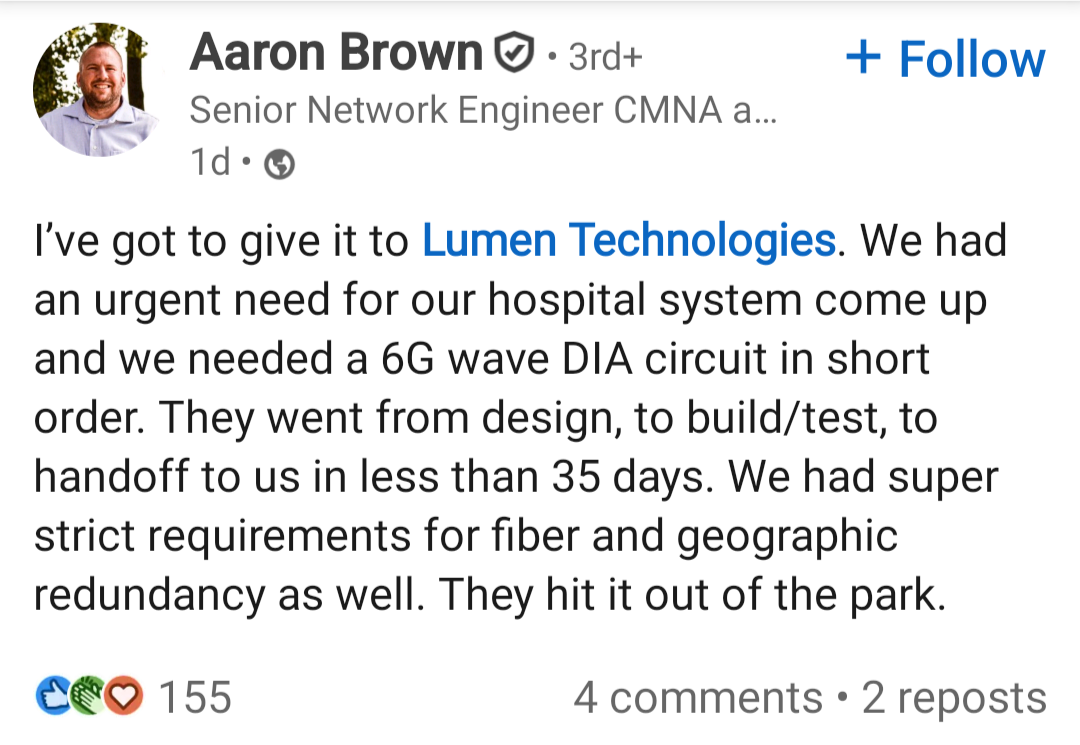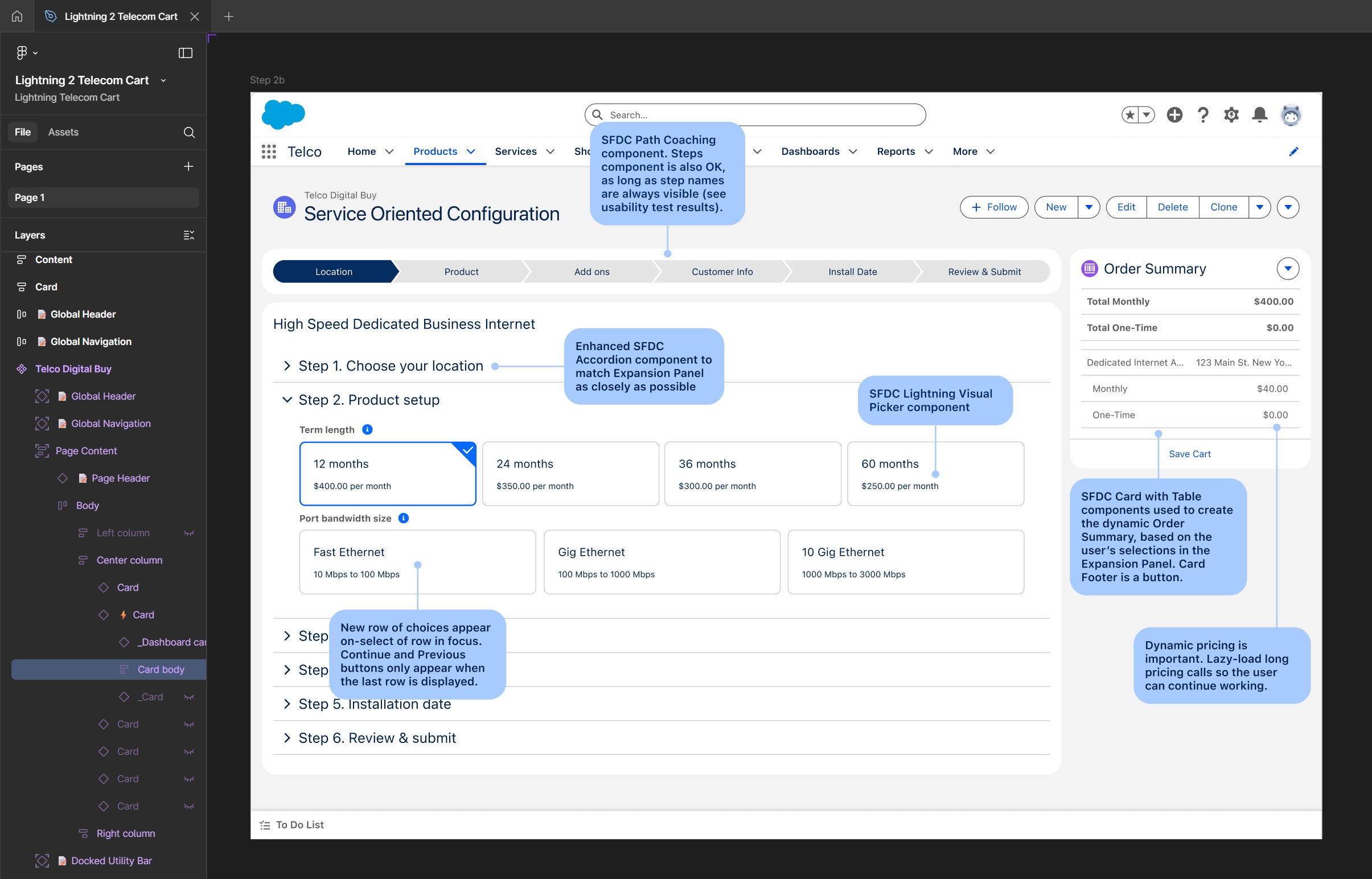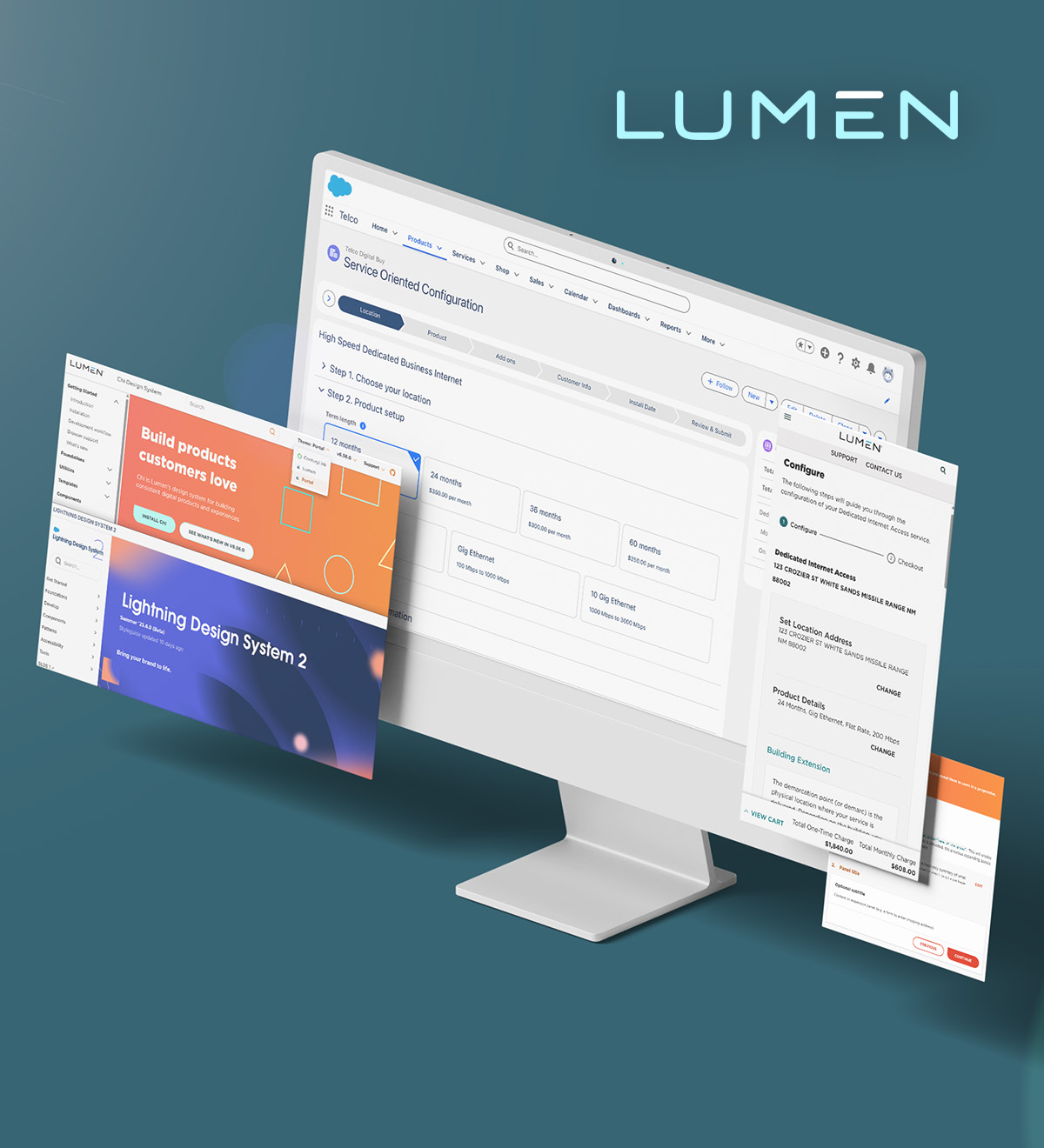Act III – Launch & Impact
The internal quoting redesign was so successful, I was asked to merge the internal Digital
Quoting tool (Salesforce Lightning design system) with the external Marketplace buy flows (Lumen
Chi design system). I made them close enough to feel seamless, even across two different design
systems.
After a year-long North Star design effort, and then a seemingly impossible sub-six month release
schedule, the Lumen Marketplace was launched. We acheieved:
A TRUE SELF-SERVE DIGITAL MARKETPLACE
For a company built on legacy telco processes, this was a seismic shift. Customers no longer
needed insider knowledge or long sales cycles to get started: they could browse, configure,
price, and purchase directly. For Lumen, it meant faster revenue recognition, reduced sales
friction, and a modern customer experience that put them in the same conversation as
digital-native competitors like AWS and Azure.
ONGOING SUCCESS & REVENUE
By 2025, Lumen publicly reported 1,000+ customers on its Network-as-a-Service (NaaS)
platform, a milestone that marked the shift from telco legacy to digital-first
provider. The Lumen Marketplace wasn’t just another UX project; it became the visible proof
point of Lumen’s transformation strategy. For me, it was validating to see the principles we
fought for show up not just in design files and deliverables, but in corporate strategy
and customer adoption at scale.
TRUE TO MY DESIGN
Years later, the Marketplace buy flows still mirror my original mockups almost
pixel-for-pixel: a rare outcome in enterprise UX. It’s proof that the vision we set was
strong enough to endure, guiding not just the launch but the platform’s ongoing evolution.
